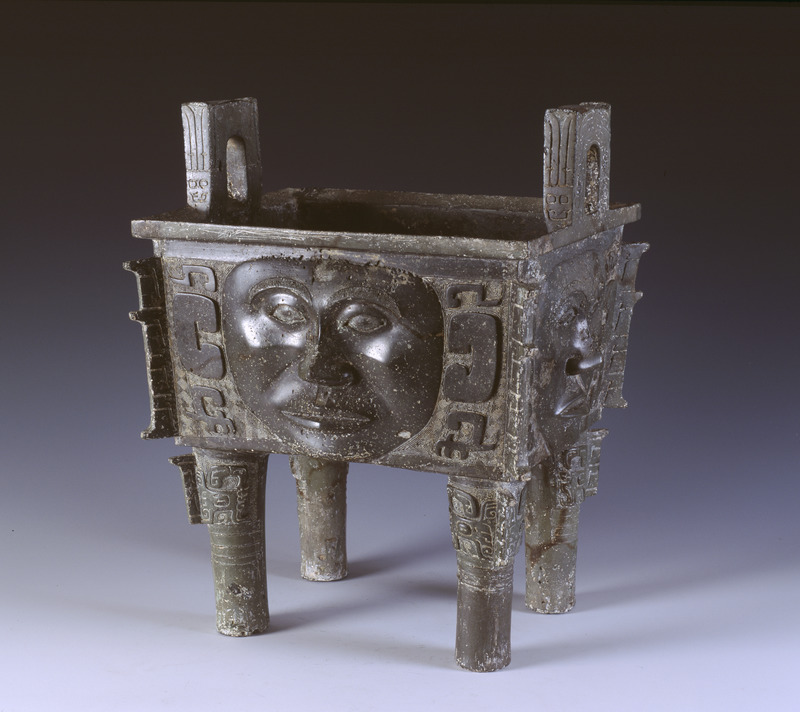Bronze Ding with Human Faces

Date: Shang Dynasty (1600-1100 B.C.)
Place: Ningxiang, China
Height: 38.5 cm; Length: 29.8 cm; Width: 23.7cm
A Chinese Ding is something like a tripod. This Ding has two handles on the top of its brim and four underlying legs. The most attractive parts, however, are the four human face reliefs on its belly. These faces have thick brows and large eyes, high nose ridges and protruding cheekbones, tightly-shut mouths and serious expressions. On each side of each forehead is a zigzagging small horn, and on every side of each cheek an animal paw. This indicates that these are not human faces but rather the images of gods or grotesque spirits.
深入探索
Ding is originally a kind of ritual vessel used in ancient China. There are legends in Chinese history saying that Emperor Yu of the Xia Dynasty (2070-1600 B.C.) once cast nine dings. After the downfall of the Xia Dynasty, these nine Dings became the property of the Shang Dynasty (1600-1100 B.C.), and after the downfall of the Shang Dynasty, they again belonged to the emperors of Zhou Dynasty (1046-256 B.C.). Ding thus became a symbol of royal power. For the individuals, however, owning a Ding means high social status and power.



